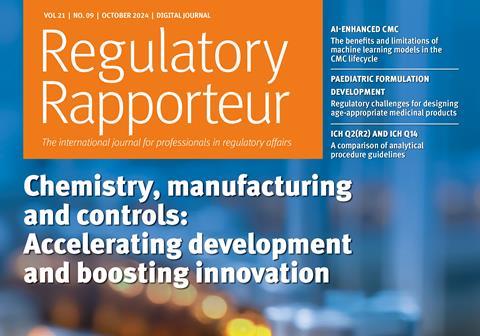
Regulatory
Rapporteur
Write to the Editor at publications@topra.org
October 2024 | Vol. 21 | No.9
EDITORIAL
Accelerating CMC development and boosting innovation

The October issue of Regulatory Rapporteur focuses on chemistry, manufacturing and controls (CMC). Throughout the pharmaceutical CMC development process, the importance of regulatory compliance is crucial, from the strategic development phase through to formulation and analytical development, supplies for clinical trials and commercial manufacture. The articles in this issue illustrate how CMC development can be expedited in different ways.
By Victoria Goff
FOCUS
Breaking barriers: the future of CMC powered by AI

As AI technology has evolved, it has paved new paths in the enhancement of safety and quality for the development of modern medicine. This article provides real-world examples of how AI and machine learning models can be harnessed by CMC professionals to improve efficiency throughout all stages of the regulatory lifecycle and facilitate innovation, as well as noting its limitations.
By Mariam Amer, Eric Kelly, George Oliarnyk and Tiejun Wang
FOCUS
CMC regulatory considerations for paediatric formulation development

The introduction of paediatric regulations has made the development of medicines for the paediatric population compulsory, but developing age-appropriate medicines for this highly diverse patient population continues to be an important challenge for the pharmaceutical industry. This article covers the difficulties associated with the development of paediatric medicinal products, focusing on the complex regulatory framework, pharmaceutical forms, excipient selection, palatability and alternative administration strategies.
By Francisco Baptista, Julien Douillet and Imke Veltman
FOCUS
A comparative analysis between ICH Q2(R2) and ICH Q14

The International Council for Harmonisation of Technical Requirements for Pharmaceuticals for Human Use (ICH) has established two guidelines to use in the development and validation activities which take place during the lifecycle of an analytical procedure used to assess the quality attributes of drug substances and products. This article presents a comparison between ICH Q2 (R2), a well established guideline for the validation of analytical methods and the newly adopted ICH Q14, which concentrates on the entire lifecycle of analytical procedures, and how the guidelines complement each other.
By Rajendra Kunda, Slobodanka Cirin-Varadjan, Rick Best, Hao Liu and Srinivas Yerraguntla
STANDALONE
Revolutionising compliance with DADI: a new frontier for digital integration

With the regulatory landscape continuously evolving towards the automation and harmonisation of data and standards, the implementation of standards developed by the International Organization for Standardization (ISO) for the identification of medicinal products (IDMP) is a top priority. The digital application dataset integration (DADI) project is a first step in this direction, with an intent to implement web-based application forms that will eventually replace PDF-based forms. This article explains the scope, the timeframes and the benefits and challenges of the DADI implementation.
By Kirti Yadav, Anamika Goel, Javier Benito, Surabhi Parasher, Vivek Tomar and Allison Gillespie
STANDALONE
Small interfering RNA: regulatory challenges and therapeutic potential

Therapeutics based on small interfering RNA (siRNA) are now appearing on the pharmaceutical market for a wide range of areas, including rare genetic diseases. While this is promising technology, this article summarises challenges facing this class of medicine, including drug delivery systems, stability and potential off-target effects.
By Penny Field


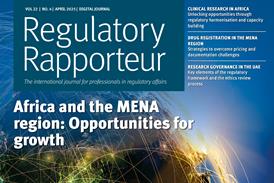








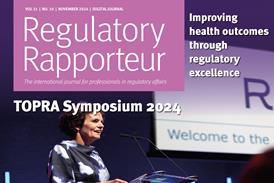










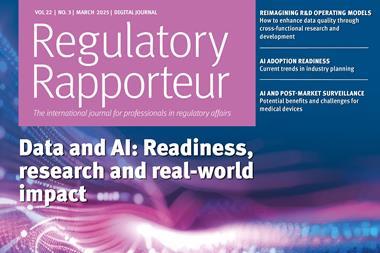
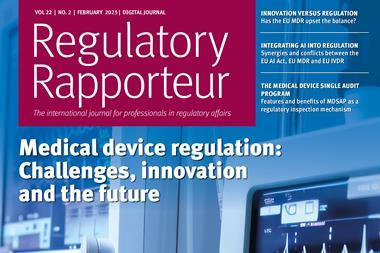
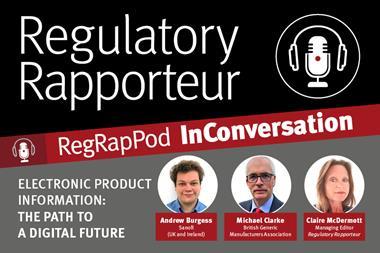
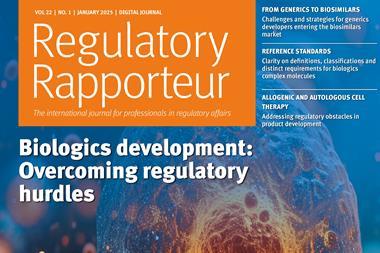
No comments yet